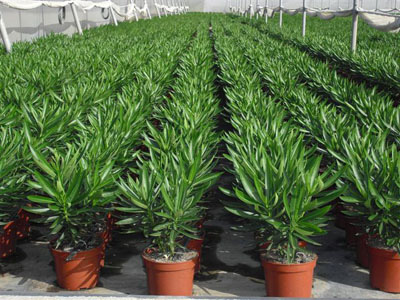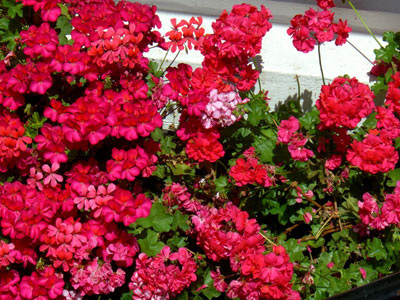Ornamental horticulture products represent 3,2% of final plant production (FPP), covering a growing area of approximately 6000 Ha, with a national production value of around 900 million euros, being the following the main production areas: Andalusia, Valencia region, Catalonia, the Canary Islands, Galicia and Murcia.
The social gains of such production are extremely high, given the large number of labourers required. The ornamental horticultural industry involves a high level of employment in certain areas given that dependence on this industry is significant, with no other crops or alternative economic activities in the most important production areas.
In 2012, Spanish exports of live plants and floricultural products increased by 12% over 2011figures, for a total value of 251 million euros. The export of live plants in 2012 accounted for 223 million euros, 19% more than in 2011, of which 88 million euros correspond to plants grown outdoors, 36 million euros to indoor-grown plants and 24 million euros to trees and shrubs.
France, Holland, Italy and Germany are the main recipients of the exportation of live plants from Spain. In 2012, exports to France increased by 15%, for a total of 68.8 million euros, those to Italy increased by 83%, for a figure of 36.7 million euros, and exports to Holland grew by 22%, representing sales for the value of 20.5 million euros.

Over the last decade, and after Germany, Spain is the country where the exportation of ornamental plants has undergone the greatest increase, up to 80%, and is furthermore the European country with a greatest export increase in 2012. This clearly demonstrates the wide-spread acceptance of Spanish live plants in foreign markets, and that our country is currently considered to have the greatest potential for growth in Europe with regard to ornamental plant exports. This potential is based on the quality, freshness and external attractiveness of the plants and the growing methods used.
The inclusion of a large number of companies in exporting activities, with the Administration’s support aiming to ease greater publicity of Spanish products, is one of the main priorities of the industry to maintain its current position and ensure future development. This requirement is even greater today, for all the reasons outlined above.
Natural production and the differentiating quality of Spanish plants

The main production areas are highly competitive and offer several advantages in comparison to other EU producing regions thanks to good weather conditions, excellent quality/price relation, the wide-range of products on offer, and the year-round production.
At present, the Spanish production of ornamental plants is amongst the most respectful with the environment in Europe, based, to a large extent, on the natural cultivation of plants (not using artificially heated greenhouses), and due to the implementation of certified quality systems in a large number of the exporting companies.
The development of production systems based on best farming practices has seen an increasing demand in foreign markets in this sector. In order to meet this demand, FEPEX, in conjunction with the Ministry of Agriculture, Food and Environment, and the Spanish regions (the so-called “Comunidades Autónomas”), has elaborated a best farming practices standard, the Plant Production Quality System (PPQS), adapted to suit the weather and productive conditions of Spain. This includes the requirements of the most rigorous international quality systems, and those required by all markets, relating to quality, traceability, protection of workers´ health and safety, care for the environment, and social and environmental sustainability.
The PPQS has been accepted by important European supermarkets, Do It Yourself chains and gardening centres, thus ensuring that Spanish plant nurseries comply with all market demands.
As far as FEPEX is concerned, the implementation of the PPQS by as many producers as possible is a key strategic factor for the competitiveness of the Spanish ornamental horticultural industry, allowing to offer products that meet the ever-growing demands of consumers and customers in relation to environmental quality. At present, all companies participating in the International Trade Fairs organised by FEPEX in the Spanish pavilion have some type of environmental quality system in place.